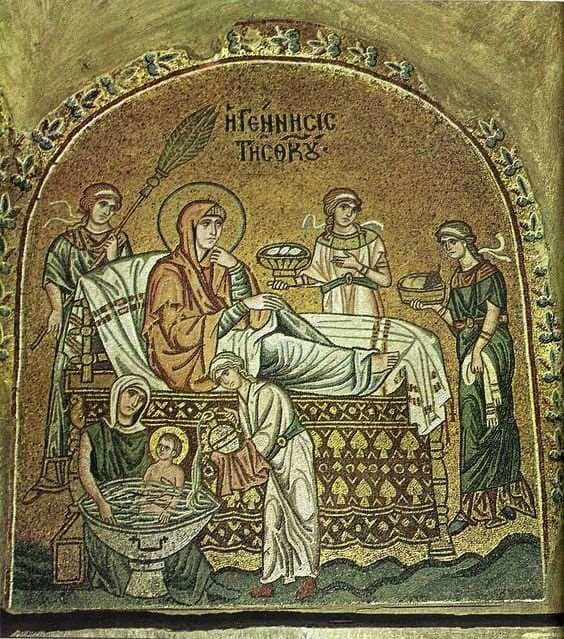Today, 8th September, we celebrate the feast of the Nativity of Mary, Our Blessed Mother!
“What then should we offer to the Mother of the Word other than an oration? Let the whole of creation make festival and sing of the most holy birth-giving of the holy Anna. For she bore for the world an inviolable treasury of blessings.” (St John Damascene, On the Nativity of Mary)
The Epistle today is from Philippians, and it is about Christ, “Rather, he emptied himself, taking the form of a slave, coming in human likeness; and found human in appearance, he humbled himself, becoming obedient to death, even death on a cross. Because of this, God greatly exalted him and bestowed on him the name that is above every name” (Philippians 2:7-9).
The mystery of Mary, the Theotokos, the Birth-giver of God, is united with the mystery of Jesus our Lord, the Giver of Life to all. Every feast is a celebration of the one Paschal Mystery, how through his death on the Cross (“by death trampling upon death”) the Son of God bestowed life upon the whole world, and how, therefore, in our humiliation, in giving ourselves in love to God and, through him, to each other, we find glory in God. Joachim and Anna were humbled and desolate, barren of children, and yet, “from infertile ground, the fertile ground is born. From her has grown the Gardener (see that Mary Magdalene mistakes the risen Christ for a gardener) of all fruit, the flower bringing life, who by the will of God nourishes the universe” (1st Troparion, Ode 3, Matins of the Pre-feast).
Today, we chant that “Joachim and Anne were freed from the reproach of childlessness.” This mystery must be re-lived in the life of Christ, the child born of Mary, who dies on the Cross in desolation, so that all the universe may be freed from the “despair of death,” and find life in God.
Sr Vassa offers this brief and informative video on Mary and her parents, Ss. Joachim and Anna whose feast we celebrate tomorrow, September 9.
Watch Sr. Vassa here:
Meditation by Archpriest David Petras and edited by PAZ.
Holy Monastery of Dafni in Greece, 2nd half of the 11th century, mosaic (courtesy of Fr Elias).
